In this Article
Toggle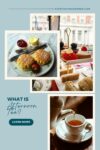
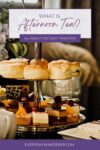
Discover the delightful world of afternoon tea, a cherished ritual that offers much more than just tea and snacks. Explore the history, food, and etiquette that make English tea time a timeless experience as I answer the question, “What is afternoon tea?”
As a German-American who’s never watched an episode of Downton Abbey and needs the subtitles turned on to understand The Crown, I did not grow up around afternoon tea time. But when my cousin married an Englishwoman, I was introduced to this delicious afternoon experience.
Two children and 20 years later, my cousin’s wife is now an American citizen. But that hasn’t stopped her from continuing her beloved tea tradition, and I’m always happy to enjoy the experience with her.
Related Article: How to Speak Yankee – A Guide for People Who Speak King’s English
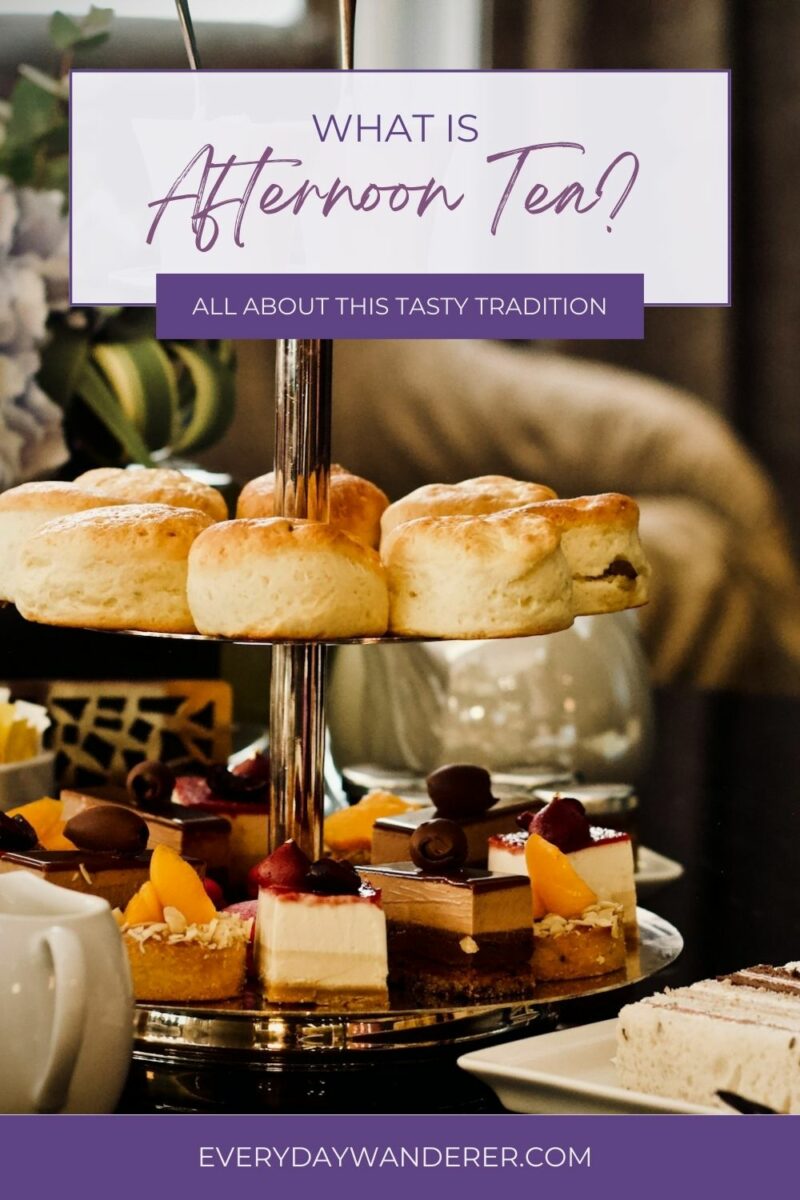
To help offset the costs of running EverydayWanderer.com, you’ll find affiliate links lightly sprinkled throughout the site. If you choose to make a purchase via one of these links, there’s no additional cost to you, but I’ll earn a teeny tiny commission. You can read all of the legal blah blah blah (as my little niece says) on the full disclosure page.
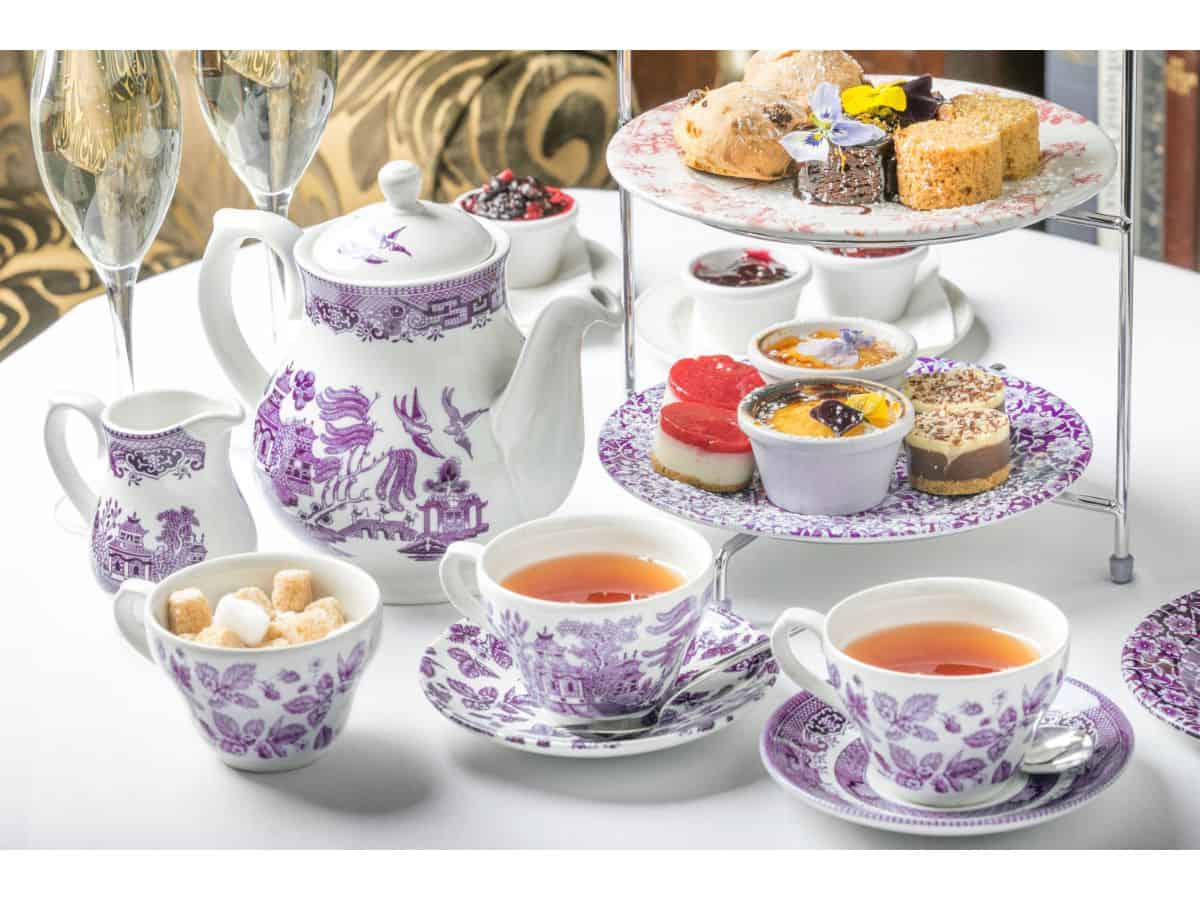
What is Afternoon Tea?
Afternoon tea involves sipping tea while noshing on dainty finger sandwiches, scones topped with clotted cream and jam, and scrumptious desserts. It’s typically held in the mid- to late-afternoon to bridge the gap between lunch and dinner.
"What I love the most about afternoon tea is that it’s an opportunity to slow down and spend quality time with friends. We normally hold them for baby showers, birthdays, and so on."
— Anna Marikar, Crunchy Family
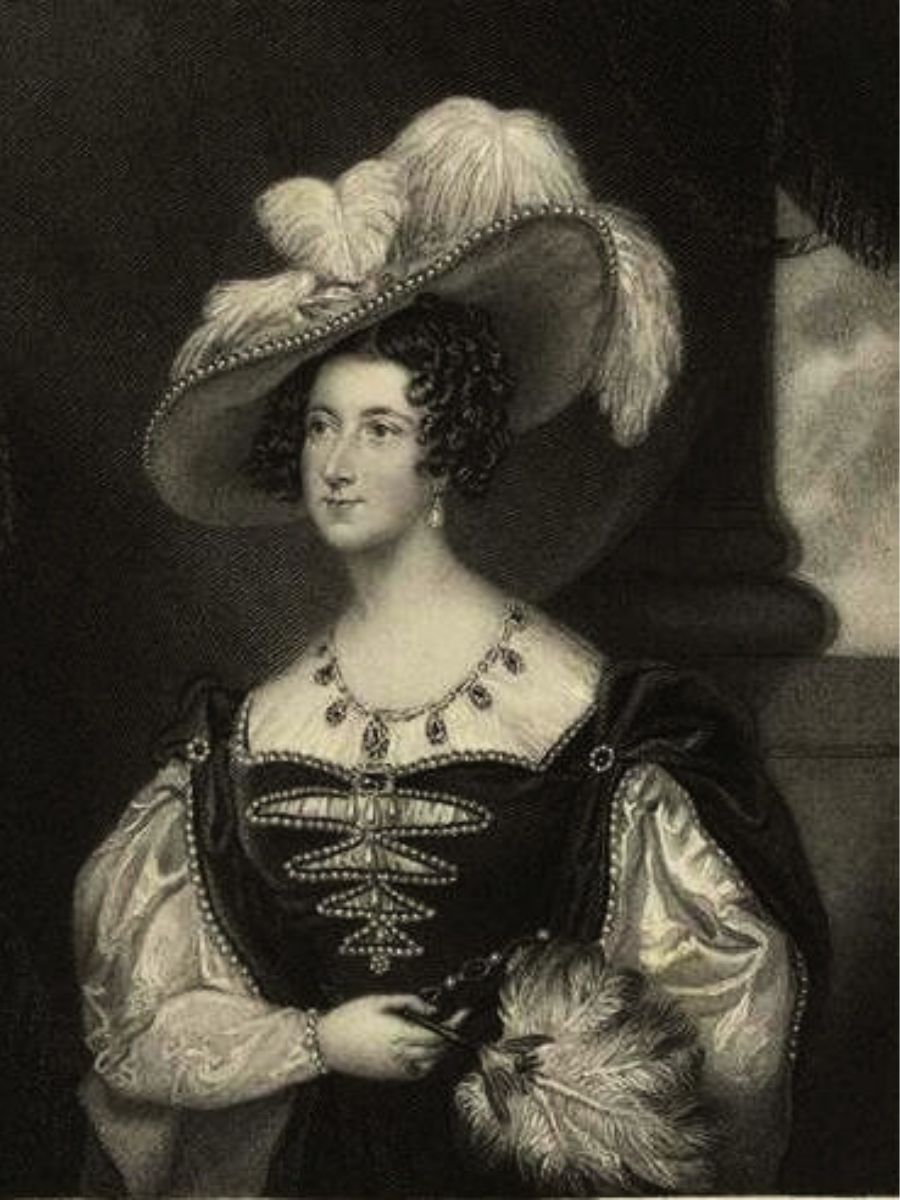
A Brief History of Afternoon Tea
Anna Maria Russell, the 7th Duchess of Bedford and lifelong friend of Queen Victoria, is credited with conjuring up this afternoon snack break. Dinner was usually served around 9:00 pm, causing the Duchess to be hangry in the mid-afternoon. Since Mars had not yet invented Snickers bars, the duchess ordered tea, bread, and cakes to her room.
What began as a somewhat solo afternoon snack became more of a tea party when the Duchess started inviting her friends and family to join her. Tea time became more of a social event, and a delicious British tradition was born.
Let’s explore what modern afternoon tea looks like, from the duchess’s private rooms to today’s popular tea rooms.
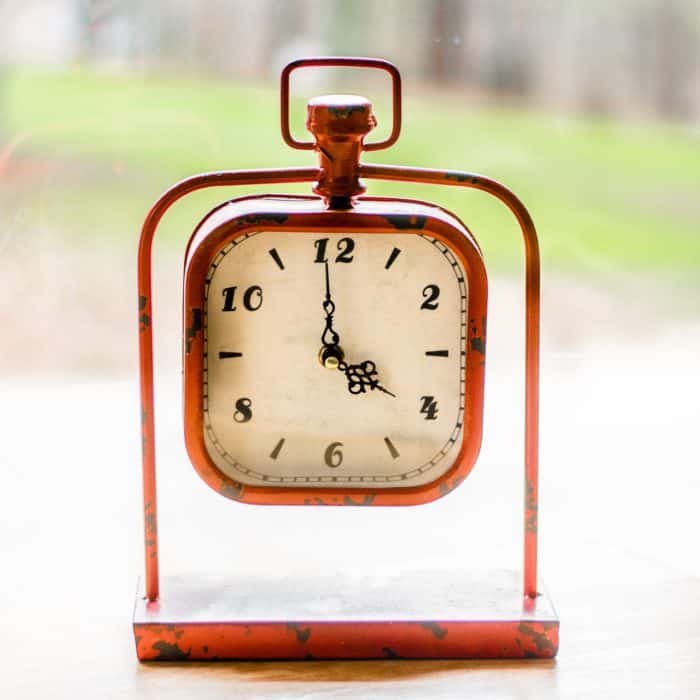
What Time is Afternoon Tea?
In England, tea is typically served around 4:00 pm. However, in the United States, tea time can vary by establishment, and it’s not uncommon for hotels and restaurants to serve tea as early as 2:00 pm.
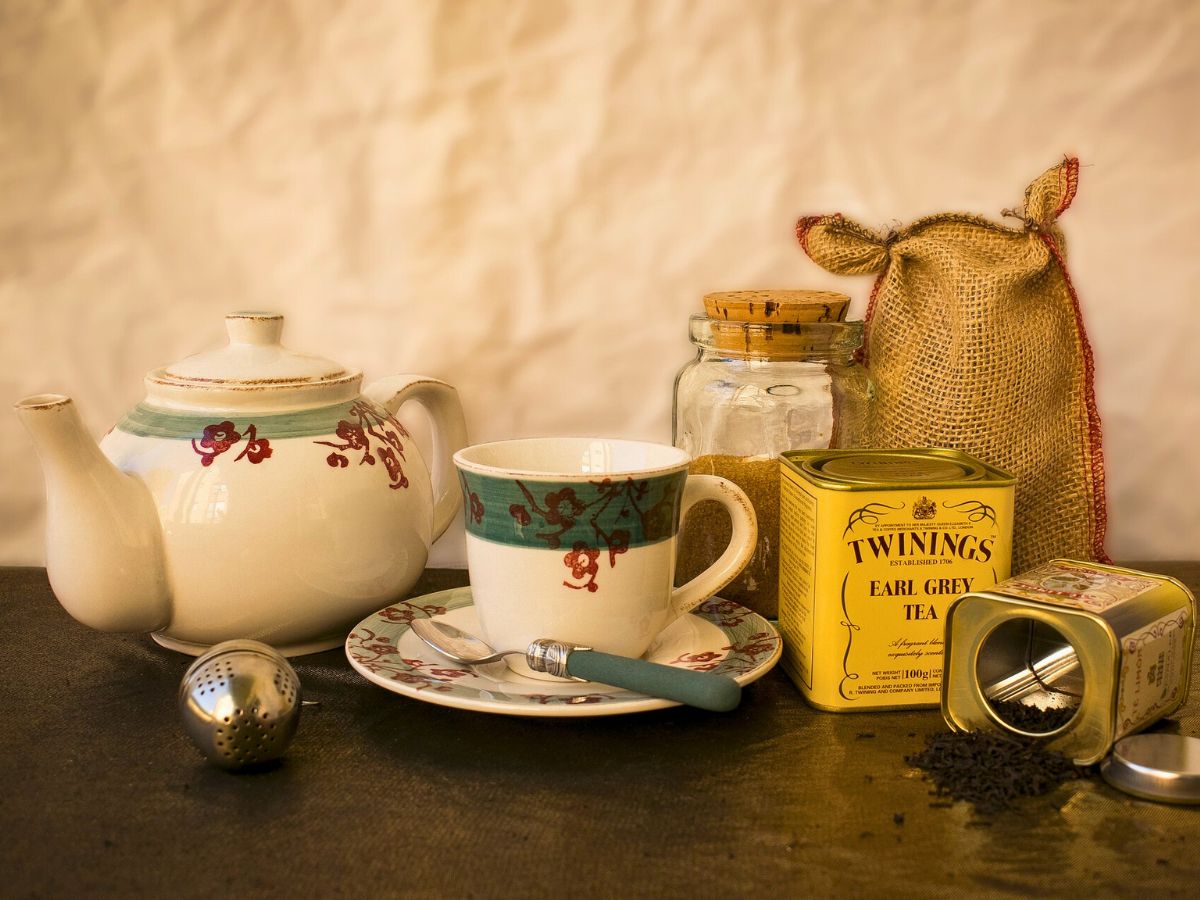
What Type of Tea is Served at Afternoon Tea?
My English cousin-in-law always orders Earl Grey. And the way the words sound with her beautiful English accent to ears here in Kansas City usually requires one of us Yankees to translate for the server, but that’s another story.
In addition to Earl Grey, other black teas, like Assam or Darjeeling, are also quite popular. Afternoon tea service may also include herbal teas, like chamomile, peppermint, and hibiscus.
"The best English tea I’ve ever attended was held on the lawn of the historic Woodlawn Museum in Maine. Fresh flowers on the tables, fresh air, the antique China service and petite, bite-size, desserts — including brownies, butter, cookies, and tarts — made the tea a really special occasion."
— Jennifer Osborn, Kitchen Serf
What Food is Served at Afternoon Tea?
An afternoon tea menu is light and typically has three components: bite-sized savory snacks, warm scones with clotted cream and jam, and an assortment of sweets.
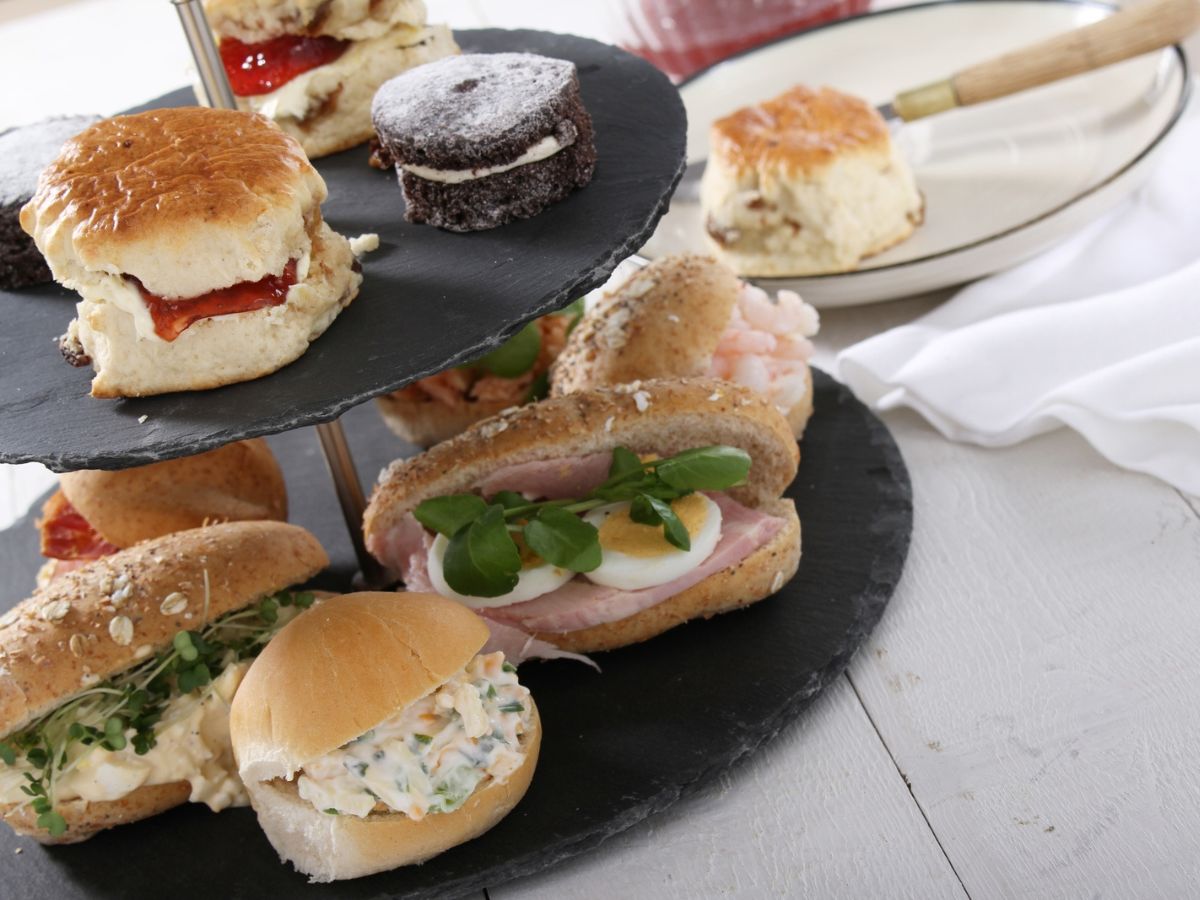
Everything is commonly served on a three-tiered rack, with savory tea sandwiches and other finger foods on the bottom. Cucumber sandwiches and sausage rolls are traditional fare, but trendier options like fennel and apple salad in Belgian endive cups are increasingly popular.
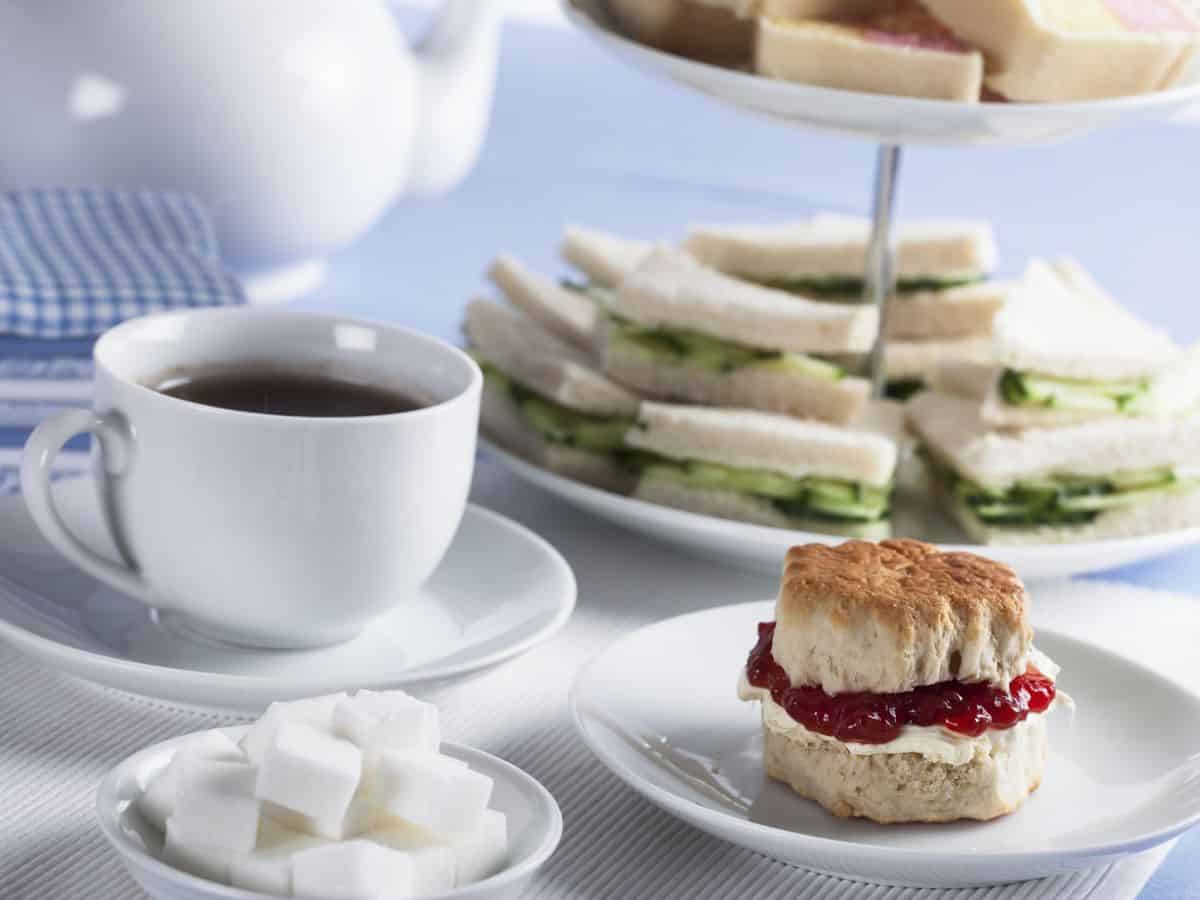
The middle tier typically includes scones. While I’m a big fan of traditional British scones made with just flour, baking powder, butter, milk, and sugar, some tea menus — especially those in the United States — include a wide variety of scones. Stateside, it’s not uncommon to find sweet varieties, like peach scones with vanilla glaze or brown sugar scones with maple butter, and savory options, like cheese and jalapeno scones and watercress with goat’s cheese, instead of the English classic.
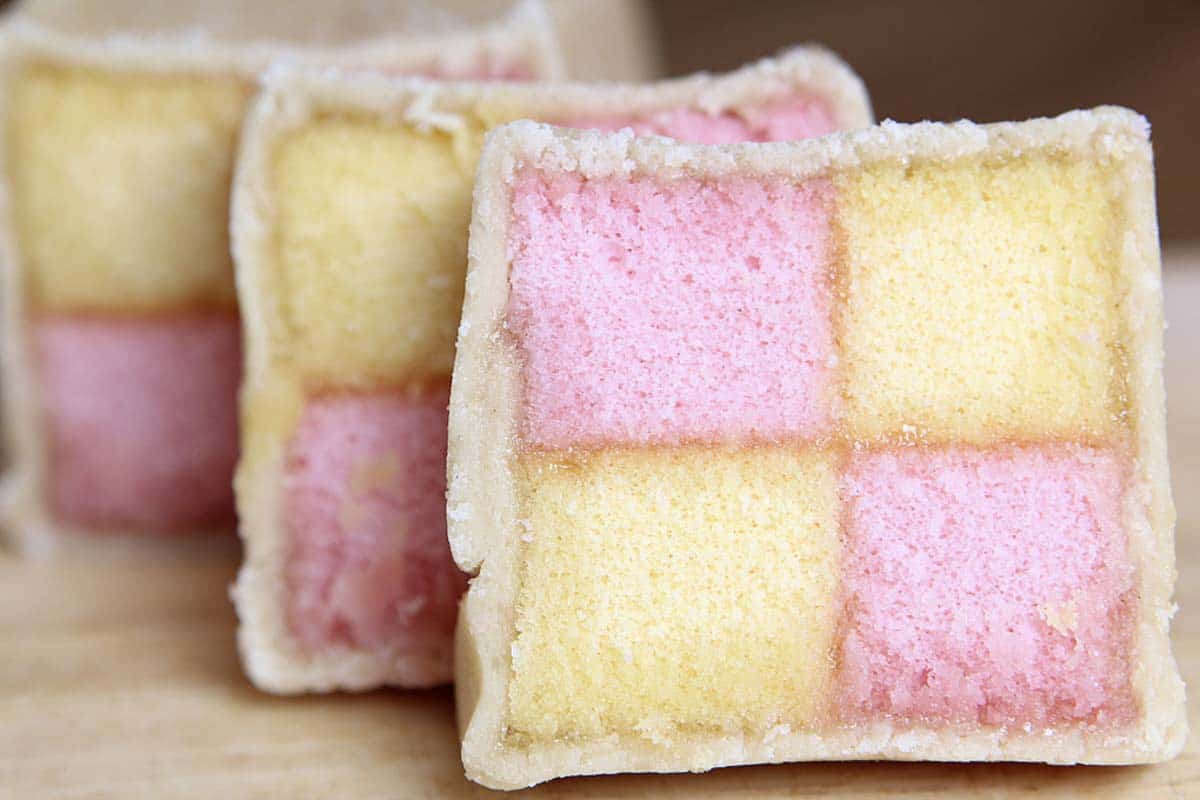
At the top of the tea food pyramid are all of the sweets. Crisp biscuits (as the British refer to cookies in the United Kingdom) and strawberry tarts are popular desserts served at English afternoon tea. One of my favorites, however, is Battenberg Cake. Allegedly created in honor of Queen Victoria’s granddaughter to Prince Louis of Battenberg in the 1880s, this rose pink and lemon yellow checkerboard cake is wrapped with marzipan and is as delicious as it is pretty.
What is the Difference Between High Tea and Afternoon Tea?
Even though high tea might sound more elegant than afternoon tea, that’s not the case. Think of the two tea services like Greenland and Iceland — Greenland sounds lush but is full of ice, and Iceland sounds frigid but is lush. The same dynamic is at play here — the two types of tea are the opposite of what you might expect!
High tea is a big meal traditionally eaten by workers coming home after a long day. It was called high tea because it was eaten at a tall dining table. This meal included lots of filling foods like meat and vegetables and, of course, tea. It wasn’t fancy but more about getting a good, hearty meal after a long day’s work.
On the other hand, afternoon tea is a lighter and more elegant meal. It usually includes lighter fare like finger sandwiches, scones with cream and jam, sweet treats, and tea. The upper class enjoyed this type of tea in the late afternoon as a way to socialize and enjoy a light bite before dinner.
So, the main differences between high tea and afternoon tea are the time of day, the food served, and the purpose they serve.
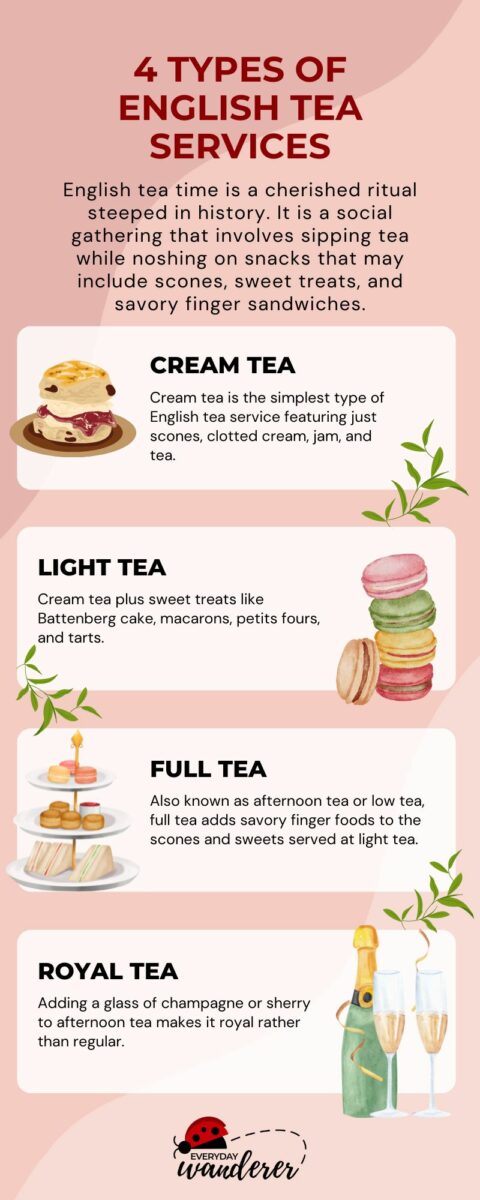
Types of Afternoon Tea Services
Now that you understand the difference between high tea and afternoon tea, here are some other types of afternoon tea services to consider.
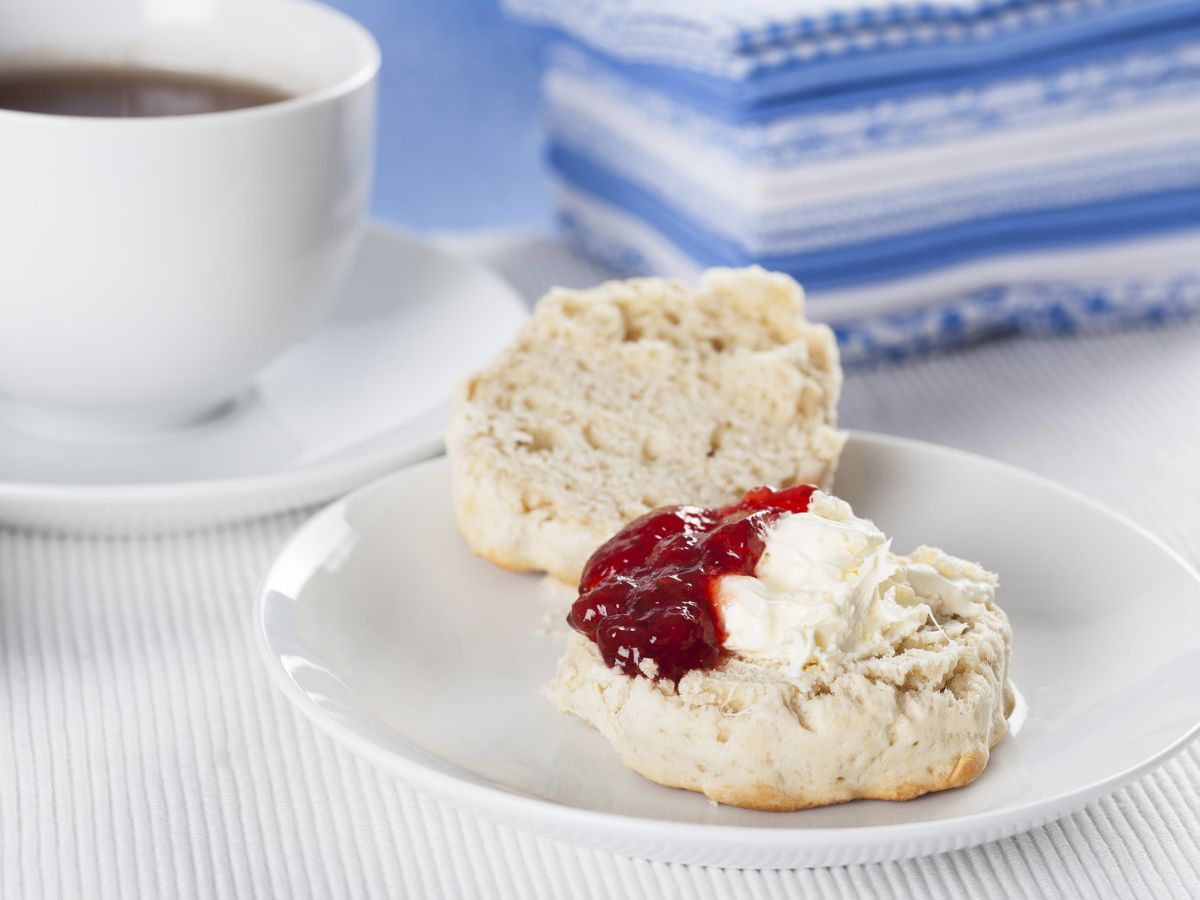
Cream Tea: Scones + Tea
Cream tea is the simplest type of English tea service with just scones, clotted cream, jam, and tea. It’s a great introduction to the world of tea service.
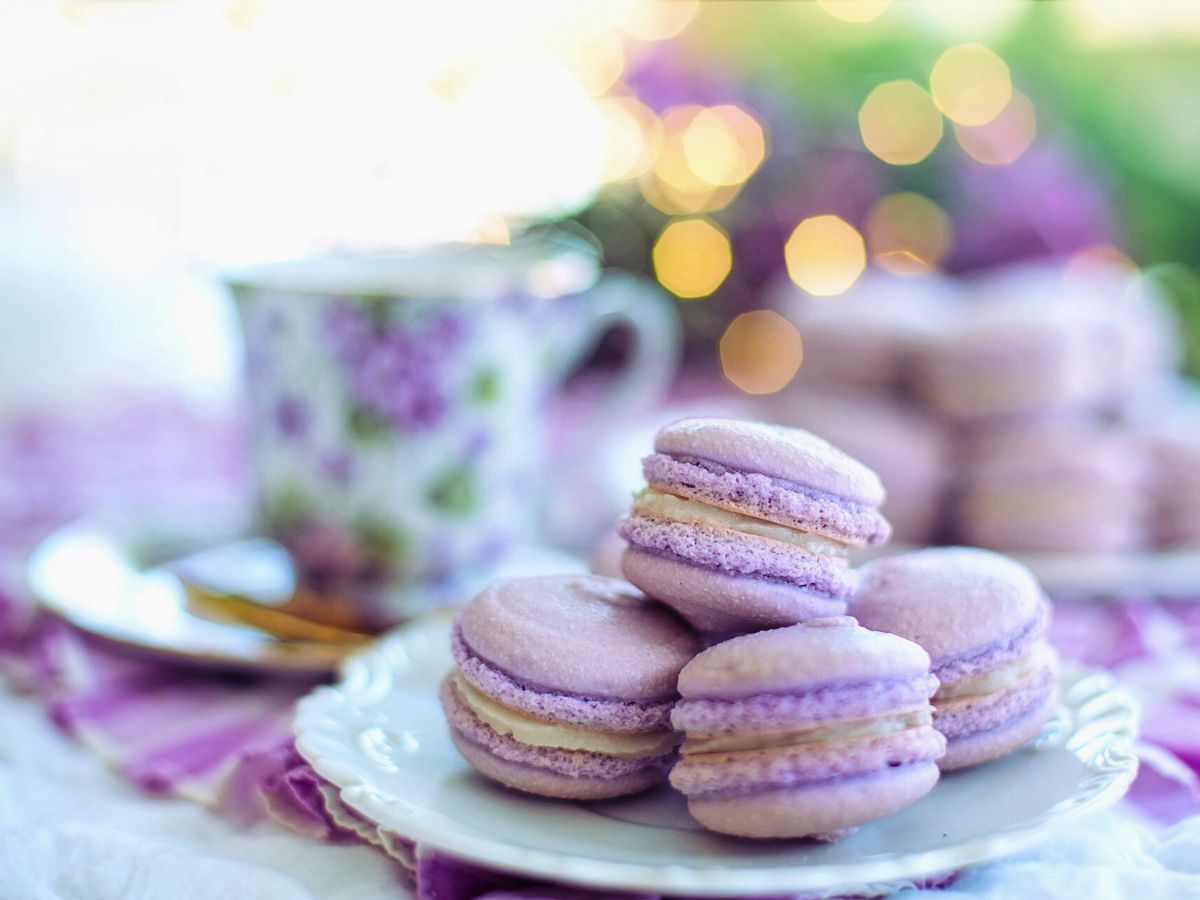
Light Tea: Scones + Sweets + Tea
This afternoon tea service adds sweet treats to go above and beyond cream tea, but doesn’t include the savory finger foods from full tea. Because why eat sandwiches if you can enjoy petits fours, macarons, and other sweet treats instead?!?
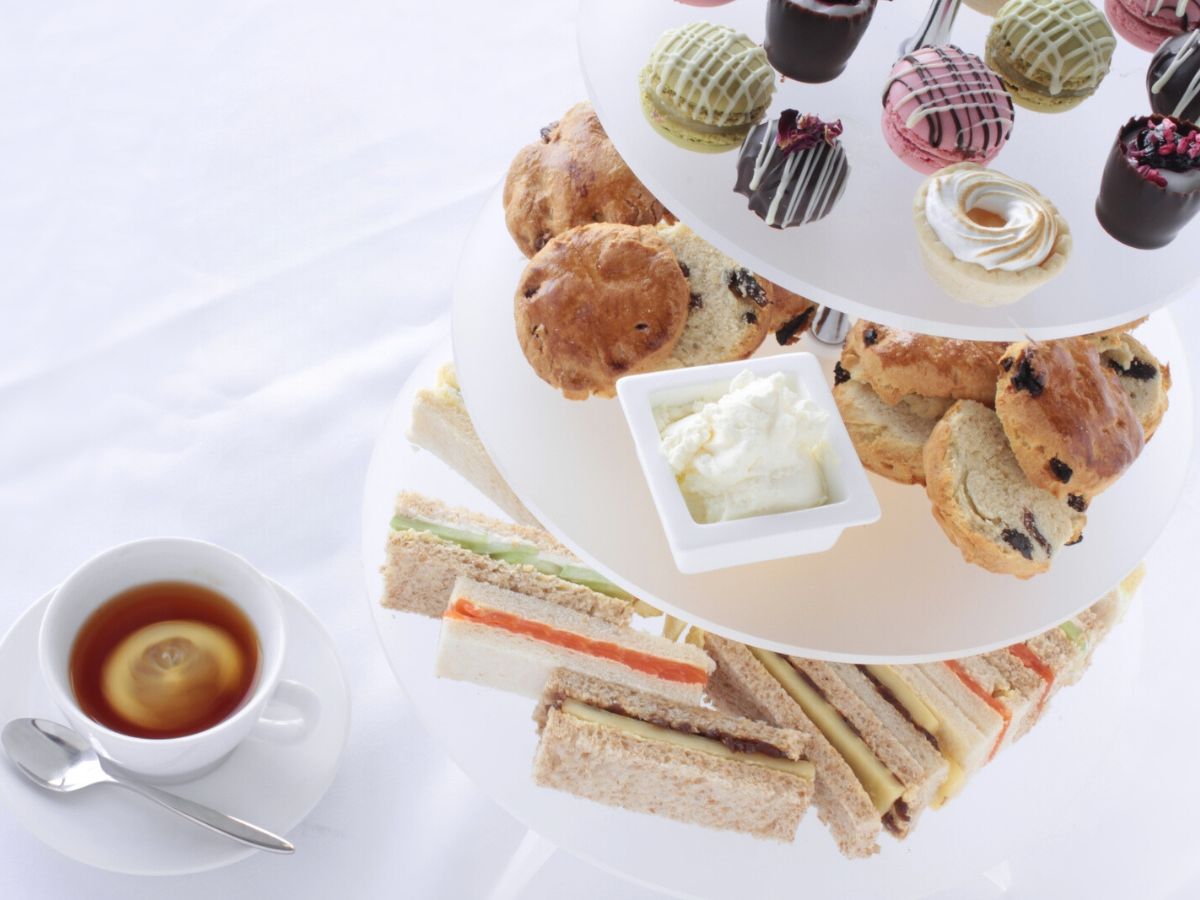
Full Tea: Savory Foods + Scones + Sweets + Tea
Also known as afternoon tea or low tea, full tea adds savory finger foods to the scones, sweets, and tea served at light tea. It is one of the most common types of afternoon tea service at hotels, restaurants, and bakeries.
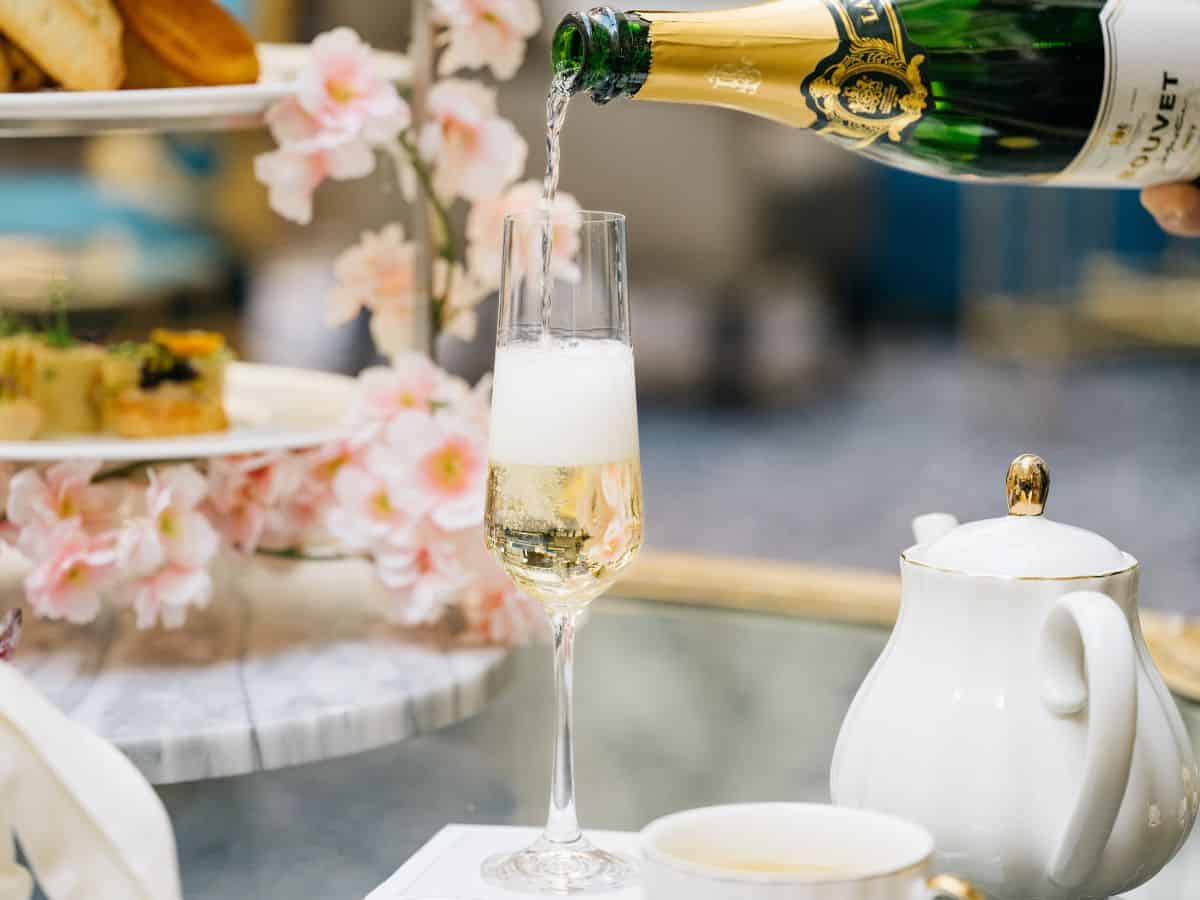
Royal Tea: Full Tea + Champagne or Sherry
Adding a glass of champagne, sherry, or another adult beverage to the standard fare makes a tea royal versus regular. Day drinking, dainty sandwiches, and fruit tarts? Count me in!
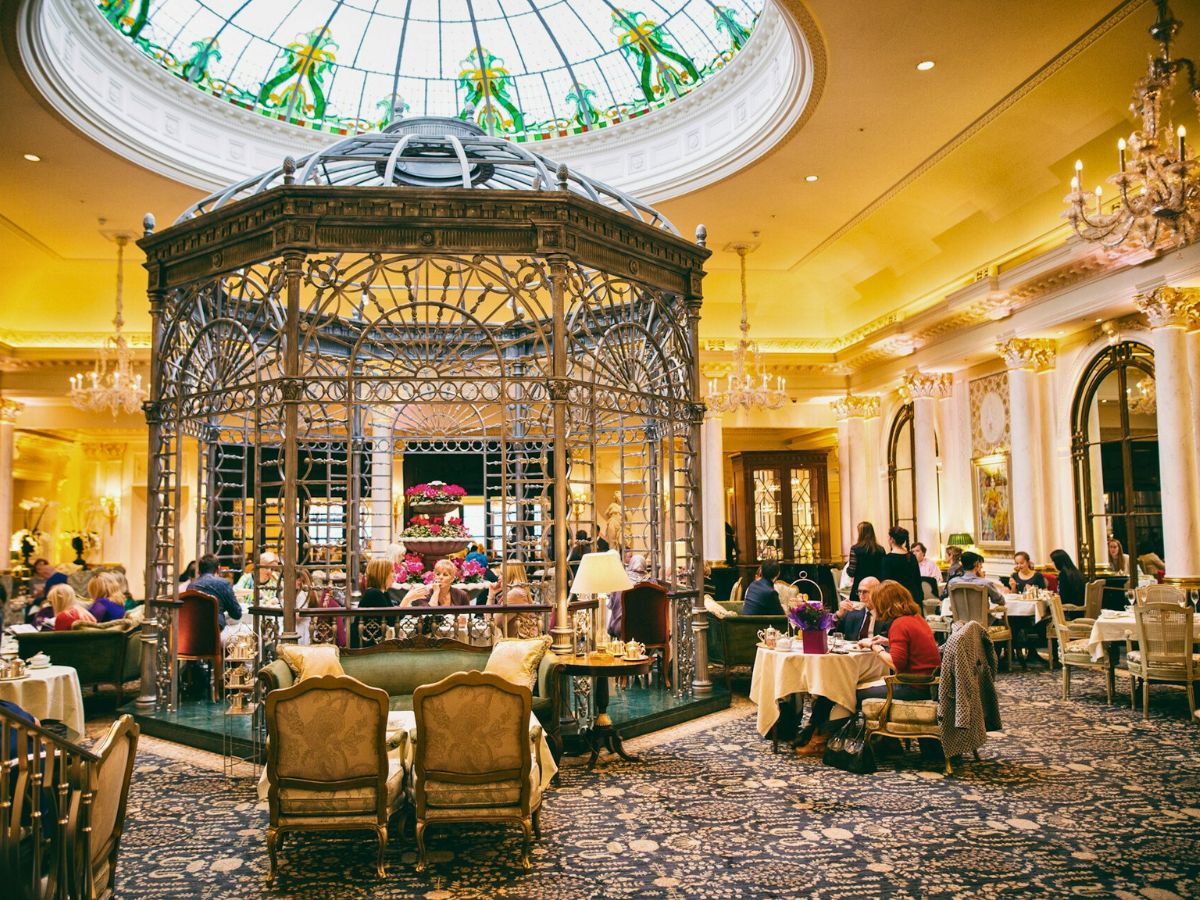
What to Wear to Afternoon Tea
If you’re wondering what to wear to afternoon tea, I have answers! Most restaurants and other establishments serving tea anticipate that their guests will dress in a “smart casual” or “business casual” style. This means that dresses and slacks (including nice jeans) paired with a pretty top are appropriate for women.
For men, nice slacks (including nice jeans) and a collared shirt are appropriate. While men don’t need to wear a jacket or tie, it wouldn’t be over-the-top. Sweat pants, yoga pants, jeans with tears, and tennis shoes are generally inappropriate.
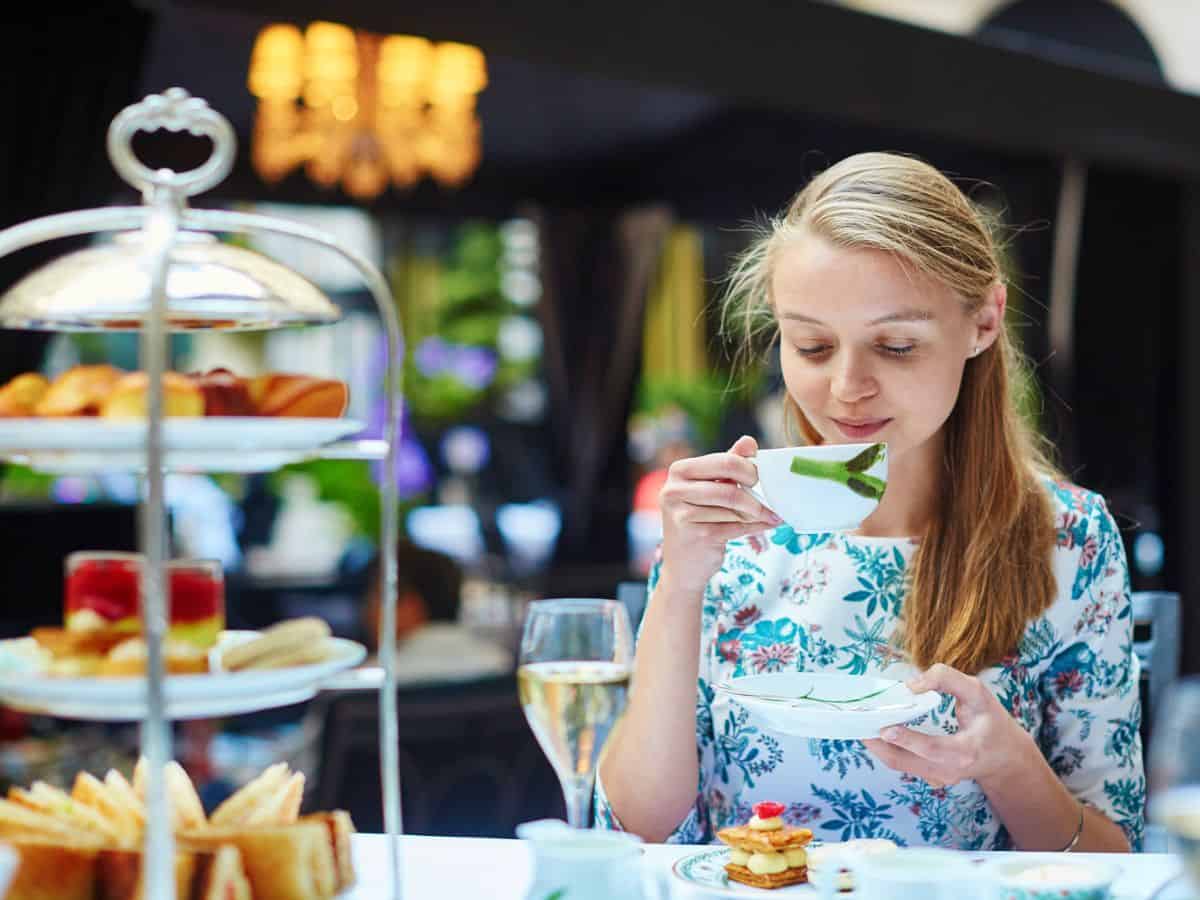
Mastering Tea Time Etiquette
As an English tradition, several etiquette rules may feel foreign to Americans. These include:
- asking for “some tea” and not “a tea,”
- stirring your tea gently up and down rather than in a circular motion, and
- enjoying the three-tiered assortment of treats from the bottom up.
Read this article for all the etiquette you need to know to enjoy tea time like a duchess and not a dork.
Do You Enjoy Tea Time?
Have you experienced a British tea service? What did you like most? Share your thoughts and experiences in the comments section below.
Ready to Go?
Use These Helpful Links to Book Your Trip!
- Find low fares with airfarewatchdog and Skyscanner
- Book your plane ticket with Expedia or Kayak
- Or take the scenic route on an epic road trip in a rental car or an RV from Outdoorsy
- From hotels to private homes, find the perfect accommodation with Hotels.com or Vrbo
- Travel in style with a suitcase, carry-on, backpack, or handbag from eBags
- Save on tickets to attractions, sightseeing tours, and more with CityPASS, Tiqets, and Viator
- Don’t leave home without travel insurance from AXA
- Discover the sights, history, and culture of your destination with an interactive scavenger hunt
- Need something else to plan your perfect trip? Visit my travel resources page for more trusted partners. Happy wandering!
Sage Scott
Thank you for sharing!

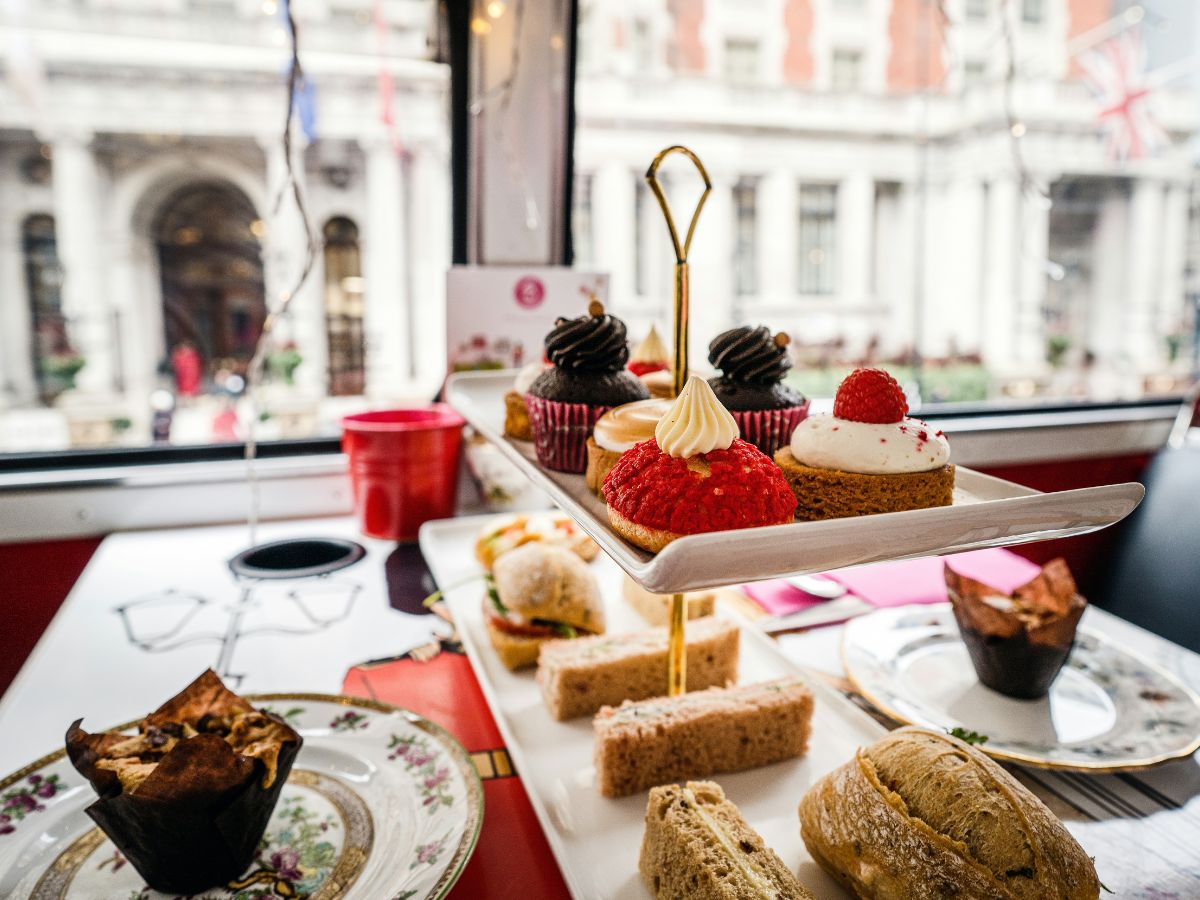


For years we had a bakery in town that offered an English Afternoon Tea that was so fun. The owners retired and now it’s gone. I’m going to take some of this information and create my own little tea for Mother’s Day. Thanks so much for all the details!
That sounds so lovely!
A few years back my Wife, Sister-in- law, significant other and myself. We’re touring the Barnum Tea Museum in London.
I posed a question about tea and a gentleman responded with a detailed answer. I was quite surprised by the level of knowledge he showed.
I introduced my self and did the same in turn.
It was John Barnum himself. Being it was close to tea time I asked if he might join us for tea, and he accepted! That day was the beginning of my love for English Tea. Mr. Barnum picked our teas with an exact and amazing accuracy.
It was the highlight of my London trip!
And a wonderful memory I shall never forget.
Wow! That is an incredible story! Thanks so much for sharing it with me!